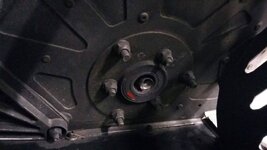I bought a used '13 Pro RMK that my son and I are prepping for winter and have come across a few things that needed to be replaced. Some seem to be very common, such as the A-arms that the adhesive lets go and allows the tube to slide in/out of the end casting. Primary clutch spring broken at first coil and tonight found the drive shaft bearing has failed and looks like has possibly done some damage to the shaft as well. Here's a picture. Looks like there should be a bolt in the end of the shaft, but nothing there when we removed the secondary clutch to get a better view. Have others seen this issue? I am not seeing any grease zerks on these bearings.




